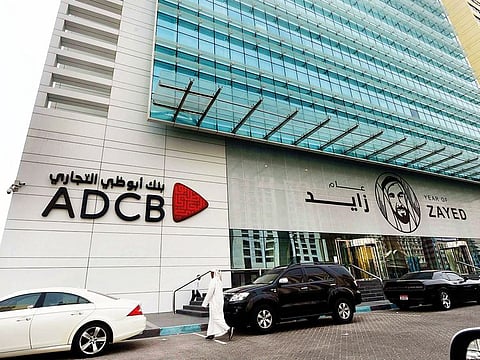COVID-19 impact: A bumpy ride ahead for UAE banks as risks begin to filter into earnings
Attractive opportunities seen in select stocks despite difficult outlook

Dubai: The UAE’s banking sector is expected to a face a bumpy ride into the third quarter with the second quarter earnings reflecting the impact of COVID-19 on asset growth, asset quality and profitability.
Despite the overall negative outlook, analysts expect some of the banking sector stocks to perform well due to attractive dividends, pandemic getting under control the country, economy opening up and the steepening of US yield curve.
According to a recent Bank of America Merrill Lynch (BofA) research note, the UAE banks continue to face pronounced risks, underpinned by a confluence of factors including a slowdown in economic activity (asset quality concerns), weaker oil prices and margin pressures from rate cuts.
“We see the impact of these factors becoming more visible in the forthcoming 2Q20 earnings season, with a significant pick up in impairments and a sharp contraction in net interest margins (NIMs). We lower our 2020-22 earnings forecasts in reflection of a sharper pick up in Impairments than previously assumed as well as an even more pronounced contraction in margins,” said Hootan Yazhari, an analyst with BofA Merrill Lynch in a note.
Not all that bad
While the UAE is facing a challenged outlook, BofA Merrill Lynch sees a number of factors that could mark a change. “In particular, we highlight the improved outlook for oil prices, the encouraging pattern in COVID-19 infections, the resumption of key economic sectors including tourism and retail, forthcoming foreign ownership limits (FOL) changes and attractive dividends,” said Yazhari.
BofA Merrill Lynch expects the steepening of the US yield curve hints at potential bottoming of net interest margins for the UAE banks, which witnessed a sharp decline in last 3 quarters following the rate cuts.
While Emirates NBD and FAB are likely to benefit from the improving operating environment BofA Merrill Lynch said they prefer local bank with strong, well-capitalised balance sheets (capacity for dividends); healthy free cash flow generation underpinned by more diversified income streams; ample liquidity; prominent Government shareholdings and attractive valuations.
Among the UAE banks, BofA believes ADCB is facing the most acute asset quality issue among the UAE banks given its exposures to NMC and Finablr. While the bank has taken material provisions, see significant further provisions ahead insufficient.
“We believe its general provisions (stage 1 & 2) will likely surge in the coming quarter as it readjusts its economic parameters in its ECL (expected credit loss) models. With a CET one ratio of just 10.5% at end of 1Q20, we believe ADCB will likely withdraw its dividend for 2020 and 2021,” said Yazhari.
Risks are likely to linger for longer
Top 10 UAE banks reported a combined 6.3 per cent quarter-on-quarter drop in interest income, largely due to the low interest rate environment according to an analysis of the first quarter 2020 financial results of top 10 banks by Alvarez & Marsal (A&M). The net profit declined by 22.4 per cent quarter on quarter on account of a 3.6 per cent drop in operating income and a 35 per cent increase in provisioning. Consequently, the average return on equity (RoE) for the universe was impacted by the reduced operating income due to a series of rate cuts and increased provisioning. At the aggregate level, operating income of top 10 UAE banks declined after increasing for two consecutive quarters. The operating income sank by 3.6 per cent from Q4 2019 as major income streams reported reduced contributions. Net interest income (NII) dropped by 3.1 per cent as low interest rates fully offset a marginal increase in loans and advances and non-interest income dropped by 4.9 per cent, which impacted total operating income. Net interest margin (NIM) witnessed sizeable contraction by about 15 bps to 2.54 per cent in the first quarter of 2020, on account of a sharp decline in interest rates. NIM decreased after rising for two consecutive quarters. Seven of the top 10 banks reported a decline in NIM. Total loan loss provisions of top 10 banks saw a sharp increase in the first quarter of 2020 by 35 per cent from Q4 2019, while non-performing loans (NPL) to net loans ratio increased substantially to 5.2 per cent. Tough market conditions due to COVID-19 headwinds was the primary factor that led to increased provisioning. Cost of Risk (CoR) increased to 1.8 per cent as banks took increased provisioning because the challenging operating environment weighed on asset quality.
Sign up for the Daily Briefing
Get the latest news and updates straight to your inbox








